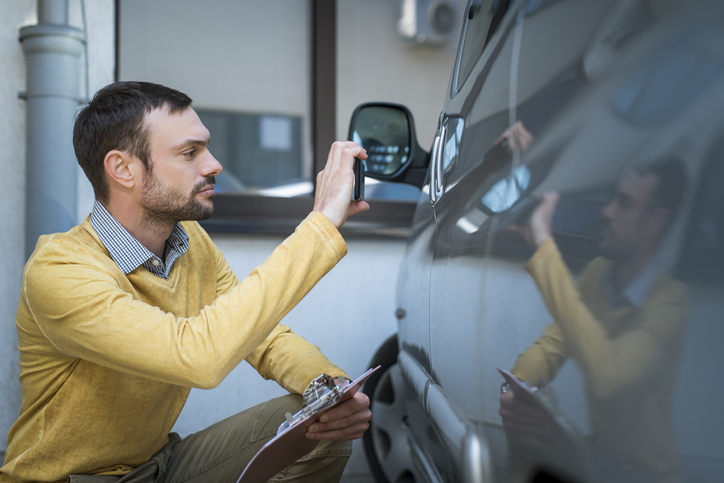As we enter the 2023-24 legislative session, PIANY has released its legislative priority list. At the top of that list is reforms to the state’s photo inspection system. But, what is the inspection system and what is PIANY doing about it?
What is the photo inspection requirement?
You will find the state’s photo inspection requirement in New York Insurance Law Section 3411. Under the law, when a consumer purchases a personal auto insurance policy, he or she must have photos taken of the insured vehicle to document its physical condition within 14-days of the beginning of the policy period. The photo inspection system is administrated by a company called CARCO. Policyholders must have their inspection performed at an authorized CARCO photo inspection site. By documenting any physical damage on the vehicle at the beginning, it reduces the likelihood that an individual would be able to submit an insurance claim for preexisting damage, a form of insurance fraud.
Does everyone have to get a photo inspection?
No. 11 CRR-NY 67.3, colloquially referred to as Regulation 79, contains several exceptions to the photo inspection requirement. Under that regulation, insurance companies have the option to waive the photo inspection requirement in certain circumstances, including when a vehicle is at least seven years old and when the vehicle is a replacement vehicle for a vehicle that a consumer has been continuous insurance with the same insurance company. A full list of exceptions can be found here: photo inspection exceptions.
Who performs photo inspections?
There are authorized CARCO photo inspections scattered around the state. Typically, auto mechanics, gas stations or insurance agencies will act as authorized sites. However, they are not even distributed and often inconvenient to find.
What are the problems with the system?
It’s not easy to get an inspection. The number of authorized photo inspection sites in New York state is decreasing. There is approximately one inspection site for every 12,000 registered vehicles in New York state. Currently, more than half of the counties in New York state have five or fewer inspection sites. The lack of inspection sites means that for many New Yorkers, the nearest inspection site can be more than 20 miles away with limited availability. The inspection sites that do exist have limited hours, offering very little outside of the traditional nine-to-five workday. This means that policyholders will likely need to take time off work to complete the inspection process.
What happens if a policyholder does not get a photo inspection?
If a photo inspection is not performed within 14-days, the insurance carrier is required by law to terminate physical damage coverage. This means that if a someone was to get into an accident in that vehicle, there would be no physical damage coverage and any cost related to that would have to be paid out of pocket.
Why are photo inspections required?
The photo inspection requirement dates to 1977. During that time insurance fraud was on the increase in the state. This was due in large part to the technological limitations in a paper claims filing system, that made sharing information between insurance companies, as well as keeping track of prior claims, very difficult. These conditions created an environment in which opportunistic individuals could bounce from one insurance company to the next, submitting claims for preexisting damage.
Is the photo inspection system still necessary?
No. While the photo inspection requirement may have been useful in combating fraud in the 1970s, the effectiveness of the program wanned as claims-sharing technology advancements and changes were made to federal law.
What has changed?
Technological advancements have made it far easier for individuals to document and submit information directly to insurance companies as requested. Starting in 1981, standard vehicle identification numbers were required to be included for all on-road vehicles. The standardization of VINs has allowed for easier tracking of vehicles. For example, the federal government requires uniform salvage disposal, which requires insurers to report vehicles that are determined to be a total loss to the New York State Department of Motor Vehicles. In addition, insurance companies utilize ClaimSearch, a central registry for all property damage claims. Insurers are required to check this database before paying a claim. These are just two of the advancements in technology that have rendered the photo inspection requirement unnecessary.
What is PIANY doing about photo inspections?
PIANY supports legislation that would allow automobile insurance companies to waive the photo inspection requirement for some or all insured vehicles when the insurance policy includes coverage for physical damage.
Would allowing carriers to waive photo inspections led to higher fraud?
It’s unlikely that fraud would increase in any material way if the photo inspection system was made optional. As previously mentioned, technologically advances already have made the photo inspection system redundant and outdated. Further, because the PIANY is advocating for the system to be made optional, if fraud were to increase, insurance companies could reinstate the photo inspection process.
Would waiving the photo inspection hurt those businesses that do perform inspections?
It’s unlikely. As mentioned earlier, many of the authorized photo inspection sites are auto mechanics, gas stations or insurance agencies. The majority of photo inspection sites offer photo inspections as an ancillary service for clients, and it is not a significant means of income for business. In fact, many businesses have ceased acting as inspection sites due to low return on investment for the service.

Bradford J. Lachut, Esq.
Bradford J. Lachut, Esq., joined PIA as government affairs counsel for the Government & Industry Affairs Department in 2012 and then, after a four-month leave, he returned to the association in 2018 as director of government & industry affairs responsible for all legal, government relations and insurance industry liaison programs for the five state associations. Prior to PIA, Brad worked as an attorney for Steven J. Baum PC, in Amherst, and as an associate attorney for the law office of James Morris in Buffalo. He also spent time serving as senior manager of government affairs as the Buffalo Niagara Partnership, a chamber of commerce serving the Buffalo, N.Y., region, his hometown. He received his juris doctorate from Buffalo Law School and his Bachelor of Science degree in Government and Politics from Utica College, Utica, N.Y. Brad is an active Mason and Shriner.






